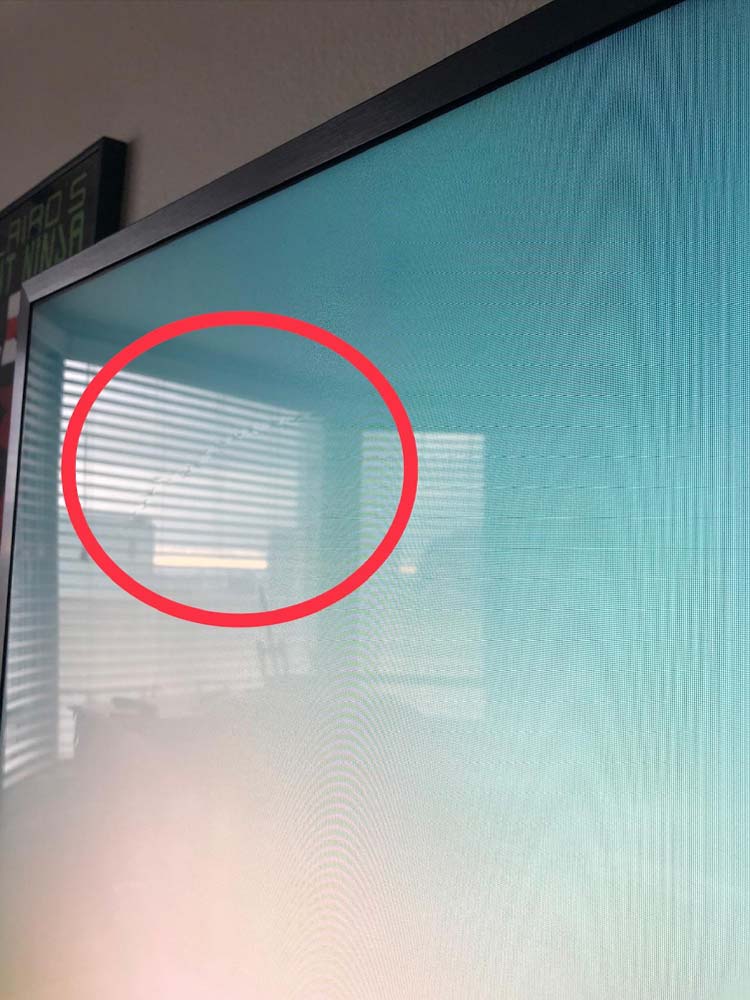Moiré streaks are peculiar streaks that interfere with the picture, such as when we use our cell phones to take pictures of our computer screens or LED displays, this problem sometimes occurs. So, how can we solve this problem so as to get better and clearer picture taking effect?
Don’t worry, in this article, we will analyze the causes of Moore’s Stripes on the screen and give solutions
Understanding the moiré Effect on LED Screens

As briefly mentioned above, if you ever feel that there is some ripple strange or pattern on your screen that just shouldn’t be, well, that’s the moiré effect right there. That is a form of visual disturbance that will make an otherwise crisp LED display fuzzy or distorted.
This moiré effect can occur for various reasons. One is that patterns overlap or combine in a manner whereby these objectionable visuals are produced, making the display or picture is not sharp. While they might be very noticeable at times, they disturb the quality of what you are looking at.
Another common situation is that when we use a camera to shoot an LED screen, we will also see strange moiré patterns.
What Causes Moiré Patterns on LED Screens?

Below is a continuation of the moiré patterns causes.
Mismatched Pixel Pitch and Content Resolution
Another major reason for the moiré pattern is mismatching of the pixel pitch of the LED screen with the resolution the content carries. Pixel pitch in general refers to the distance between the centers of two neighboring pixels on an LED screen.
If the content’s resolution doesn’t match this pixel pitch well, the screen cannot carry some lines and textures well, which interferes with the screen’s normal functioning.
Inconsistent Alignment of LED Modules
Most LED screens are actually made up of multiple panels or modules fitted together. Where those modules aren’t set up perfectly in installation, what tends to happen is slight misalignment in the pixel grid.
Gaps or shifts in these modules can then trigger the moiré effect at different angles, simply because the pixel arrangement isn’t lining up smoothly across the whole display area.
Interference Between Fine Detail in Content and LED Pixel Grid
Basically, the fine details would clash with the pixel grid of the screen when the content to be shown on an LED screen requires high information, such as thin lines, grids, or textures.
Fundamentally, the fine content patterns and pixel grid interact, resulting in additional visual patterns that give the moiré effect. This interference may result in wavy or rippled lines showing up on the display that are quite literally not there in the original content.
Viewing Angle in Relation to the Screen’s Pixel Structure
This effect may be further influenced by the angle at which an individual views an LED screen, since the apparent structure of the pixels in that screen changes with the angle of view.
Sometimes if the angle isn’t right like being close to the screen, the pixel alignment interacts with visual content a little differently to create an illusion of extra lines or waves.
Low refresh chip
When the LED screen uses a low refresh rate chip, due to its slow flashing frequency, the photos taken will have moiré patterns.
Key Solutions for Solving Moiré Patterns on LED Screens
We now know what causes the moiré effect on your LED displays, but how do you prevent or solve that? Let’s answer that below.
Content Resolution Adjustment
The resolution of the content is to be changed to the specification of the pixel pitch of the LED screen. Alignment like this reduces the possibility of interference with any kind of pattern display because of the pixel grid.
Optimize Viewing Angles
Changing the angle at which one views the screen or sometimes changing the distances can eliminate or diminish the moiré effect entirely.
Align the Modules Properly
During the installation process, all the LED modules have to be perfectly aligned.
Anti-Moiré techniques to be used
Anti-moiré methods should be initiated at the design phase, mostly by adding slight blur or changing patterns that will preclude it from interfering with the pixel grid. With such methods applied, moiré effects can be suppressed efficiently.
Replace the chip with a higher refresh rate
When it is necessary to meet the shooting requirements of high-speed cameras, we can replace the high refresh chip to achieve a perfect and moiré-free image.
Conclusion
To sum it up, moiré on an LED screen can be reduced by quite a number of solutions. By adjusting resolution, and optimizing angles of view together with anti-moiré techniques, you could be able to improve perceived clarity.
We want to encourage trying any of these approaches until you discover one that works best for your circumstances. A little practice can give you a clearer, sharper view without the annoyance of moiré patterns.




